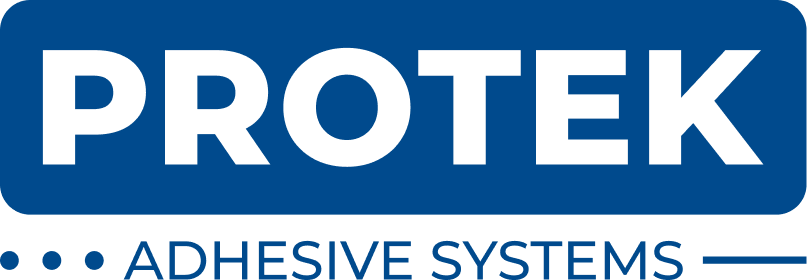Why Hot Melt PSA Slot-Die Setup Matters - and How to Achieve It
- Protek

- Oct 9
- 4 min read
In pressure-sensitive adhesive (PSA) manufacturing, hot melt slot-die setup is one of the most critical steps for ensuring consistent coating quality and production efficiency. Whether you’re producing labels, tapes, automotive components, or flexible packaging, even minor slot die application problems can lead to wasted material, defective products, and costly downtime.
As a UK leader in adhesive system servicing, Protek Adhesive Systems understands how proper PSA coating setup impacts performance, cost, and customer satisfaction. This in-depth guide walks you through why slot-die configuration matters, common challenges, and actionable slot die coating tips to help you achieve precise, reliable results.

Table of Contents
Understanding Hot Melt PSA Slot-Die Coating
Why Proper Slot-Die Setup is Critical
Key Factors in Achieving Perfect Slot-Die Alignment
Avoiding Common Slot Die Application Problems
Step-by-Step Guide to Hot Melt PSA Slot-Die Setup
Advanced Tips for PSA Coating Efficiency
Understanding Hot Melt PSA Slot-Die Coating
Hot melt PSA (pressure-sensitive adhesive) systems are widely used in converting and manufacturing industries. The slot-die coating method applies molten adhesive in a precise, uniform layer onto a substrate. This process requires:
● A heated slot die - to keep the adhesive at the correct viscosity.
● A metering system - to control adhesive flow and thickness.
● A substrate transport system - to ensure even coverage.
PSA coatings are prized for their instant tack, durability, and solvent-free nature, but achieving consistent results depends on proper setup and alignment.
Why Proper Slot-Die Setup is Critical
Incorrect setup can lead to uneven coatings, edge beads, or gaps, compromising product performance. Issues include:
Defective End Products - Uneven adhesive thickness can cause lifting, curling, or weak bonds
Increased Waste - Poor alignment results in scrapped material and lost adhesive.
Downtime - Fixing coating issues mid-run halts production.
Higher Costs - Inefficient adhesive use increases operational expenses.
Proper slot-die configuration improves transfer efficiency, reduces rework, and extends equipment life.
Key Factors in Achieving Perfect Slot-Die Alignment
1. Temperature Control
Maintaining consistent adhesive temperature is essential for viscosity and flow. Use calibrated sensors and regularly check heating zones.
2. Gap and Lip Setting
The gap between the die lips determines coating thickness. Use precision feeler gauges or automated gap measurement tools.
3. Web Tension
Inconsistent tension can cause wrinkles or coating skips. Integrate tension control systems to maintain uniformity.
4. Substrate Cleanliness
Dust or oils on the substrate can disrupt coating adhesion. Incorporate cleaning stations before they die.
5. Flow Distribution
Use manifolds or filters to ensure even adhesive flow across the entire width of the die.
Avoiding Common Slot Die Application Problems
Edge Beads
Excess adhesive collects at substrate edges.
Solution: Adjust lip alignment or reduce flow rate near edges.
Streaking or Lines
Caused by debris or damaged die lips.
Solution: Inspect and clean dies, and use filtered adhesives.
Coating Voids
Uneven flow creates gaps in coverage.
Solution: Check pump calibration and web tension.
Die Lip Build-Up
Excess adhesive builds on lips, leading to drips.
Solution: Regular cleaning and appropriate temperature control.
For complex issues, consult Protek’s servicing team for on-site diagnostics and repairs.
Step-by-Step Guide to Hot Melt PSA Slot-Die Setup
Prepare the Work Area - Ensure the environment is clean, and all tools are ready.
Inspect and Clean the Slot Die - Remove old adhesive residue and check lips for damage.
Calibrate Temperature Zones - Heat to the adhesive’s specified range, avoiding overheating.
Set Initial Lip Gap - Adjust according to product specs and verify with gauges.
Align Web Path and Tension - Thread the substrate through rollers, maintaining even tension.
Prime the Adhesive System - Purge old material to avoid contamination.
Test Coat - Run a short sample, inspect for uniformity, and adjust as needed.
Monitor Throughout Production - Use inline inspection systems to detect variations early.
Advanced Tips for PSA Coating Efficiency
Use Data Logging - Track temperature, tension, and flow to optimise runs
Integrate Automation - Automated lip adjustments and closed-loop controls improve consistency.
Choose the Right Adhesive - Partner with suppliers offering PSAs tailored to your substrate and environment.
Schedule Preventative Maintenance - Regularly service pumps, filters, and heaters to prevent mid-run failures.
Train Operators Thoroughly - Skilled staff can spot and correct issues before they escalate.
For advanced projects like multi-layer coatings or specialty PSAs, Protek offers consultancy and custom adhesive systems to meet unique specifications.
Key Takeaways for Hot Melt Slot-Die Setup
Proper hot melt slot-die setup prevents waste, downtime, and defective products.
Key factors include temperature, gap setting, web tension, cleanliness, and flow distribution.
Avoid common issues like edge beads and streaking by using filtered adhesives and regular cleaning.
Follow a step-by-step approach and leverage automation for consistency.
Partnering with Protek Adhesive Systems ensures expert support and premium equipment.
Frequently Asked Questions
1. How do I know if my slot die is misaligned?
Signs include uneven coating thickness, edge beads, or streaks. Regular visual inspection and inline sensors help detect misalignment early.
2. What’s the ideal temperature range for hot melt PSA coating?
It depends on the adhesive type, but most PSAs operate between 150-180°C. Always refer to the manufacturer’s datasheet for specific recommendations.
3. How can I prevent die lip build-up during long runs?
Maintain correct temperature, clean dies regularly, and use high-quality adhesives with stable viscosity to reduce residue formation.
Perfect Your PSA Coating with Protek Adhesive Systems
A flawless hot melt slot-die setup is critical for producing high-quality PSAs efficiently and cost-effectively. By controlling temperature, gap settings, web tension, and cleanliness, manufacturers can avoid common slot die application problems and maintain smooth production.
Protek Adhesive Systems provides UK manufacturers with the expertise, equipment, and maintenance services needed to optimise PSA coating slot die performance.
Whether you need routine servicing, advanced troubleshooting, or guidance on adhesive selection, contact Protek today to ensure your slot-die processes deliver consistent, reliable results.


Comments